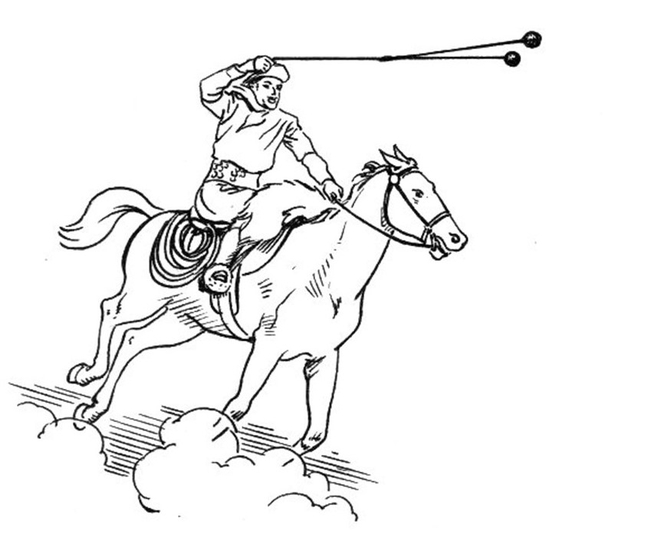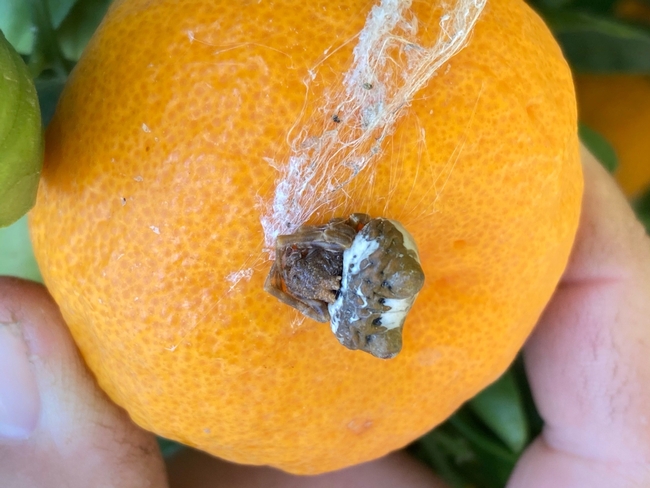Bolas Spiders - Little Gauchos with an Appetite for Moths
When UC Santa Barbara's soccer team scores a goal, a chorus of “Olé! Olé, olé, olé! Gauchos! Gauchos!” may ring out across the stadium. Perhaps a similar chant should ring out across the region's farms?
The UCSB chant is inspired by their mascot, “El Gaucho.” Gaucho are cattle herders from South America, similar to the cowboys and vaqueros of North America. One notable difference between gauchos and cowboys, however, is their tools of the trade. Instead of rounding up cattle with lassos, gauchos use bolas: lengths of rope with weighed balls on the end, which when thrown, can entangle a running animal.
Although you are unlikely to find a gaucho rounding up cattle near the UCSB campus, you may come across a much smaller, gaucho-like spider as she rounds up some pesky moths. These little gauchos — known as bolas spiders — do not build classic spider webs. Instead, female bolas spiders produce a sticky blob at the end of a silk thread, which they swing around like bolas to entangle moths and other flying insects.
These sticky bolas, however, are short-range weapons. So how can a hungry bolas spider increase her chances of catching a meal? Through the power of seduction! Multiple species of bolas spiders, including the species found in Southern California, Mastophora cornigera, can produce smells that are similar to the sex pheromones of female moths. Unable to resist the scent, male moths are drawn in and become an easy meal for a hungry bolas spider.
Scientists have also figured out how to use pheromones to trick insects into sticky situations. Pheromone traps —pheromone lures paired with sticky cards or delta traps — are used by farmers, pest managers, and researchers to closely monitor insect populations. Such traps are used to monitor pest species like the diamondback moth (plutella xylostella), which can cause major damage to broccoli, cauliflower, and other cole crops grown throughout Coastal California. The diamondback moth pheromones may have taken years for scientists to identify and synthesize, but bolas spiders figured it out long ago.
Although we cannot rely on bolas spiders to control diamondback moth populations, they are nonetheless a helpful ally against this major pest. So, if you come across a bolas spider, feel free to chant “olé, olé, olé!” in appreciation.
Captions:
A drawing of a gaucho swinging bolas over his head (public domain, Wikimedia)
It pays to look like poop? Instead of trying to blend in, this southern bolas spider has a different approach to avoid would-be predators. Many spider and caterpillar species avoid would-be predators by masquerading as bird droppings. (Photo by Kirsten Pearsons)
Additional Web Resources:
https://nathistoc.bio.uci.edu/spiders/Mastophora.htm
http://spiderbytes.org/2015/03/
https://www.inaturalist.org/taxa/153560-Mastophora-cornigera

